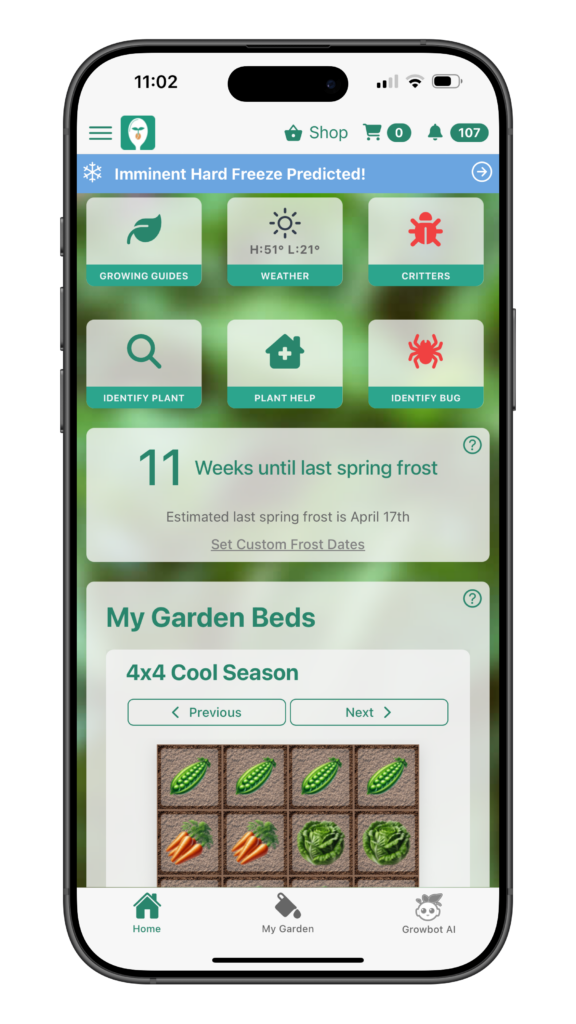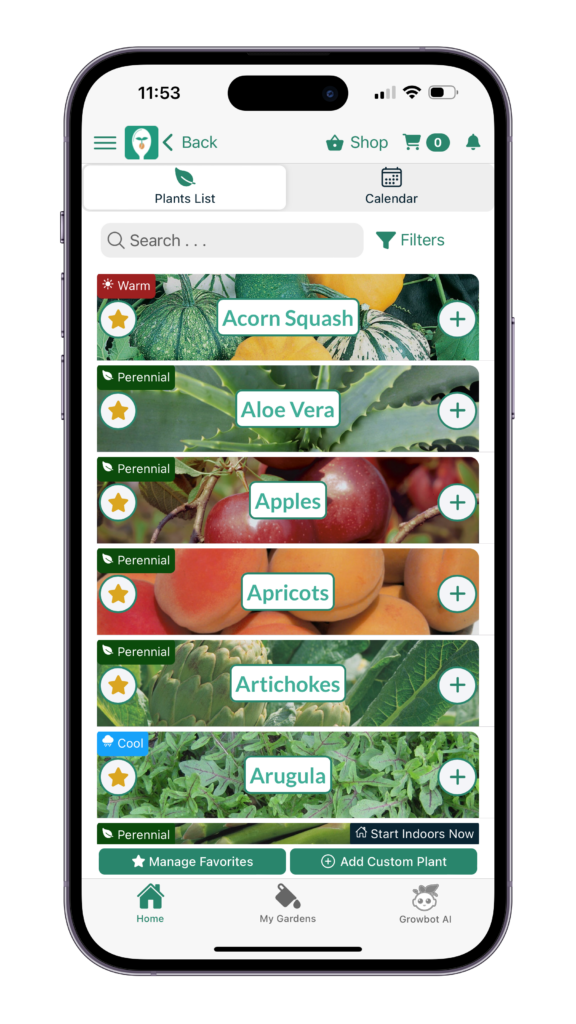How to Grow Passion Fruit: A Complete Guide
Passion fruit (“Passiflora edulis”) is a tropical treasure that rewards gardeners with its stunning flowers and sweet-tart fruits. Whether you’re growing it for its delicious harvest or to enhance your garden’s beauty, this vigorous vine is a must-have for warmer climates. Here’s how to grow passion fruit and get the most out of your garden, with a little help from the Seed to Spoon app!
What Is Passion Fruit?
Passion fruit is a fast-growing perennial vine native to tropical and subtropical regions. Its vibrant flowers attract pollinators, while its round, aromatic fruits delight taste buds with juicy, flavorful pulp. With proper care, passion fruit vines can live for 5-7 years, providing bountiful harvests in the right conditions.
How to Start Growing Passion Fruit
By Seed:
Use fresh passion fruit seeds for better germination rates. Clean and dry the seeds before planting.
Sow seeds about 1/4 inch (6 mm) deep in well-draining soil.
Keep the soil moist and maintain temperatures between 70-85°F.
Germination takes 10-20 days, but can take up to a month in cooler conditions.
The Seed to Spoon app provides step-by-step guidance on starting passion fruit from seed and offers tips to improve germination success.
By Transplant:
Passion fruit is often grown from transplants for quicker results.
Plant in a sunny location with rich, well-draining soil. Space vines 10-15 feet apart.
Use a 15-20 gallon grow bag if planting in containers to allow the vine’s roots to spread.
When to Plant Passion Fruit
Spring: Plant outdoors after the last frost when temperatures consistently stay above 50°F.
Summer: Plant early enough to give vines 12-16 weeks to establish before the first fall frost.
Fall: In USDA zones 9-11, passion fruit can be planted in fall, as long as temperatures stay warm and frost-free.
Use the Seed to Spoon app’s personalized planting calendar to find the best time to plant passion fruit in your area.
Sunlight and Water Requirements
Sunlight: Passion fruit thrives in full sun, requiring at least 6-8 hours of direct sunlight daily.
Watering: Keep soil evenly moist but not waterlogged. Water deeply once or twice a week, and increase frequency in hot, dry weather. Add mulch to retain moisture and regulate soil temperature.
Fertilizing Passion Fruit
Passion fruit is a heavy feeder and benefits from regular fertilization:
Use a balanced fertilizer (10-10-10) every 4-6 weeks during the growing season.
For better flowering and fruiting, switch to a fertilizer higher in potassium.
Avoid over-fertilizing with nitrogen to prevent excessive leaf growth at the expense of fruit.
The Seed to Spoon app can recommend organic fertilizers and provide reminders for fertilizing schedules.
Supporting Your Passion Fruit Vine
Passion fruit vines need sturdy support to grow and spread:
Train the vine to climb on a trellis, fence, or arbor to maximize airflow and sunlight exposure.
Regularly prune dead or overcrowded growth to keep the plant healthy and productive.
Common Pests and Problems
Passion fruit can attract pests like:
Aphids
Fruit flies
Spider mites
Mealybugs
Prevent pest issues by encouraging beneficial insects and using organic methods like neem oil or insecticidal soap. The Seed to Spoon app’s pest management feature helps identify problems and offers natural solutions tailored to your garden.
Harvesting Passion Fruit
Harvest when the skin turns purple or yellow and the fruit feels slightly heavy.
Fully ripe fruits may drop from the vine, but you can also gently twist them off when they loosen easily.
Health Benefits of Passion Fruit
Passion fruit is a powerhouse of nutrients:
Rich in vitamins A and C for immunity and skin health.
High in antioxidants and dietary fiber for digestion and overall wellness.
Contains potassium and magnesium, which support heart health and muscle function.
The Seed to Spoon app can help you track the nutritional benefits of what you grow and incorporate it into your diet.
Save Your Seeds
To save passion fruit seeds:
Scoop seeds from ripe fruit, rinse off the pulp, and dry them completely.
Store in an airtight container in a cool, dry place. Seeds remain viable for up to 4 years.
Start Growing Passion Fruit Today!
Passion fruit is a rewarding addition to any garden, whether you’re growing it for its delicious fruit, beautiful flowers, or both. With the Seed to Spoon app, you’ll have all the tools and information you need to grow passion fruit successfully—from planting to harvest and everything in between. Shop at Park Seed—they have a beautiful passion fruit plant available for you! Download the app today to get started on your passion fruit journey!
Learn more about growing over 100 different foods, including how to manage various pests in our FREE iOS, Android, or new Universal Web App!

Carrie Spoonemore, co-founder of “From Seed to Spoon,” stands as a beacon of inspiration for gardeners and health enthusiasts alike. Her journey alongside her husband, Dale Spoonemore, in creating a platform that demystifies gardening and promotes a healthier lifestyle, has made a significant impact on individuals around the globe. Through the “From Seed to Spoon” app, Carrie has dedicated herself to empowering people to take control of their health and environment by growing their own food.
With a profound belief in the power of gardening to improve mental and physical health, Carrie’s contributions to the Seed to Spoon blog reflect her holistic approach to wellness. Her articles often focus on the nutritional benefits of homegrown fruits and vegetables, organic gardening practices, and the mental health benefits of spending time in nature. Carrie’s expertise in health science shines through in her detailed discussions on how specific plants can contribute to a balanced diet and overall well-being.
Carrie’s passion for gardening is deeply intertwined with her commitment to family and community wellness. She frequently shares personal stories of how gardening has brought her family closer together, offering practical tips for involving children in gardening activities and making it a fun, educational experience. Her writing encourages families to explore gardening as a means of spending quality time together while learning about nature and sustainability.
In addition to gardening advice, Carrie’s contributions to the blog include insights into the use of technology to enhance the gardening experience. She has played a crucial role in designing the “From Seed to Spoon” app to be user-friendly, ensuring that users of all ages and backgrounds can navigate the complexities of gardening with ease. Her vision for the app is not just as a gardening tool but as a vehicle for change, inspiring individuals to adopt a more sustainable lifestyle by growing their own food.
Carrie Spoonemore’s presence on the blog is marked by her compassionate approach to teaching and her unwavering belief in the transformative power of gardening. Her work continues to inspire a community of gardeners to pursue a healthier, more sustainable way of living, proving that with the right tools and knowledge, anyone can become a gardener and advocate for their health and the planet.









